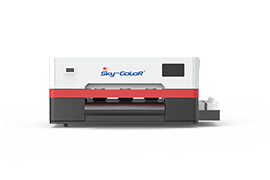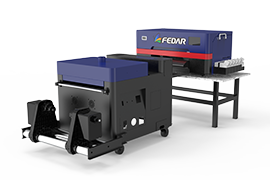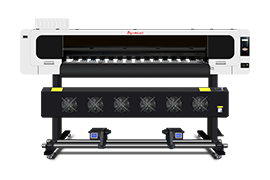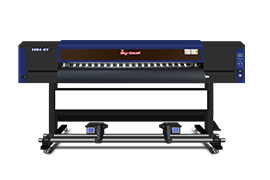Product Categories
- > Digital Textile Printer
-
- Fedar Sublimation Textile Printer
FEDAR FD61916E Sublimation Printer FEDAR FD1924 Sublimation Printer FEDAR FD1912S Sublimation Printer FEDAR FD61915E-A Sublimation Printer FEDAR FD5198E Sublimation Printer FEDAR FD51915E Sublimation Printer FEDAR FD53215E Sublimation Printer FEDAR FD61915E Sublimation Printer FD6198E 8 Heads Printer FD6194E 4 Heads Printer FD5194E 4 Heads Printer FD5328E 3.2m Printer FD5193E 3 Heads Printer Fedar TC Series Sublimation Printer(3heads,4heads,6heads)(Stop) FD5268E 2.6m Printer FD5223E 2.2m Printer (Stop) FD1900 2 Heads Printer AL193 3 Heads Printer (Stop) TC1932 2 Heads Printer (Stop)
- Fedar Direct To Film
A3 DTF Printer FDA3 DTF Printer FD70-5 DTF Printer FD70-3 DTF Printer (Stop) FD30 DTF Printer (Stop) FD60 DTF Printer FD70-4 DTF Printer FD65-2 DTF Printer (Stop) FD70-2 DTF Printer (Stop) TR 4180 (Stop) FD 680 DTG (Stop) FD1828 Belt cotton printer (Stop)
- Fedar Sublimation Textile Printer
Inventory of Textile Printing Techniques
2025-08-231. Thermal Transfer Printing
Thermal transfer is an emerging printing technology. In thermal transfer printing, ink is first printed onto paper (with a coating), and then the pattern on the paper is transferred onto the textile using a thermal transfer printing machine.
This process is divided into two main parts: transfer film printing and transfer processing:
Transfer Film Printing: Employs halftone dot printing (with a resolution up to 300 dpi) to pre-print the pattern onto the film surface. The printed patterns feature rich layers, vibrant colors, great variety, minimal color difference, and excellent reproducibility, meeting the desired effects required by designers. It is suitable for mass production.
Transfer Processing: Uses a thermal transfer machine for a single processing step (heating and pressing) to transfer the intricate pattern from the transfer film onto the product surface. After forming, the ink layer integrates with the product surface, creating a realistic and aesthetically pleasing appearance that significantly enhances the product's grade.
2. Direct-to-Fabric (DTF) Digital Printing
Direct-to-fabric digital printing is suitable for reactive, acid, pigment, and disperse dye inks. It is a process involving the direct jetting of ink onto pre-coated (sized) semi-finished textiles.
3. Cold Transfer Printing
Similar to thermal transfer, cold transfer also requires first printing the ink onto paper, followed by using specialized machinery to press the paper and fabric together to achieve pattern transfer. After pressing, the fabric undergoes one of two treatment methods: 1) traditional processes such as steaming, washing, and setting; or 2) cold batch chemical reaction treatment for fixation (the fabric requires pre-chemical treatment).
II. Classification by Dye and Process
1. Disperse Digital Printing
Disperse dye inks currently account for over 50% of the ink used for printing in China, primarily for printing on polyester fibers and other synthetic fabrics. Disperse dyes are non-ionic dyes with very low water solubility. During printing, they exist primarily as finely dispersed微小颗粒 particles in water with the aid of dispersing agents.
2. Reactive Digital Printing
Reactive dye inks constitute approximately 29% of the market and are mainly used for printing on silk, cotton, rayon, and linen. Reactive dyes contain functional groups that can undergo chemical reactions with the fiber. During printing, the dye reacts with the fiber, forming covalent bonds between them, resulting in improved fastness to washing and rubbing.
3. Acid Digital Printing
Acid dye inks represent a smaller share and are primarily used for printing on wool, nylon, silk, and other similar fabrics. Acid dyes are water-soluble dyes structurally containing acidic groups, applied in an acidic medium. They offer bright shades and a complete color range. They are mainly used for dyeing and printing wool, silk, and nylon, but also find applications in leather, paper, inks, etc.
4. Pigment Digital Printing
The usage of pigment inks in China is relatively low, less than 2%. This category includes inks such as(pigment/coating), latex, UV-curable, etc.
III. Classification by Fabric Composition
1. Digital Printing on Cellulosic Fibers
Primarily digital printing on cotton, but also includes printing on hemp, rayon (Tencel, Modal, bamboo fiber), etc., often using the corresponding processes (typically reactive).
2. Digital Printing on Polyester Fibers
Primarily digital printing on polyester (PET), including acetate fibers, using either disperse transfer or direct disperse dye printing processes.
3. Digital Printing on Polyamide Fibers
Primarily digital printing on nylon, mainly using acid dye printing processes.
4. Digital Printing on Protein Fibers
Primarily digital printing on silk and wool, mainly using reactive and acid dye printing processes.
5. Digital Printing on Blended Fibers
Primarily digital printing on blends such as polyester-cotton (T/C), nylon-cotton (N/C), polyester-rayon, etc., primarily using pigment digital printing processes.





